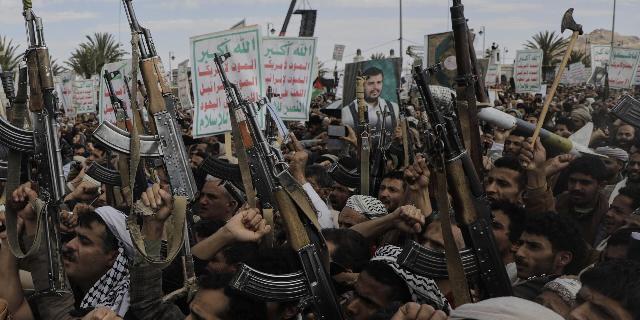TNI: The Houthis almost shot down the F-35 stealth fighter with a primitive air defense system
The Yemeni Houthis, who cannot boast of having advanced military technologies, almost managed to shoot down an F-35 fighter jet with a primitive air defense system, writes TNI. In this regard, the author of the article is interested in: How will America conduct air operations against a more advanced enemy?
Harrison Kass
According to the New York Times, a surface–to-air missile launched by the Houthis almost shot down an American fifth—generation F-35 fighter jet, the pearl of the US fighter fleet. The F-35, which participated in Operation Rough Rider (“Dashing Horseman”) against the Houthis, was forced to take an anti-aircraft maneuver to avoid the missile.
The incident raised questions about the survival of one of America's most advanced fighter jets and raised concerns that even the relatively primitive Houthi air defense system had so effectively thwarted U.S. actions.
“The Houthis' air defense systems almost shot down several American F-16s and an F-35 fighter jet, and the prospect of American losses is completely real,” wrote military analyst Gregory Brew on his Twitter account, adding that the Houthis successfully shot down “seven American MQ—9 drones (worth about $30 million). each one), making it more difficult for the Central Command to track and strike at the militant group.”
How vulnerable are American fighter jets to the Houthis' air defense systems?
The Houthis' missile defense is simple but effective
In fact, the Houthi air defense system is elementary, but it is very mobile, meaning that defense systems can appear almost anywhere, which makes the enemy unpredictable and complicates planning. Moreover, the simplified nature of the system also makes it difficult for advanced American equipment to detect early. “Many of these air defense systems are a “vinaigrette” of unconventional passive infrared sensors and homemade air–to—air missiles, which practically do not register as a threat, let alone a direct attack,“ The War Zone website reports.
The Houthis also have modern systems, kindly provided by Iran, such as the Barq—1 and Barq-2 air defense systems. The exact capabilities of the Iranian air defense systems are unclear, but the Houthis themselves claim that the Barq-1 and Barq-2 have a maximum range of 50 and 70 kilometers and can hit targets at an altitude of 15 and 20 kilometers, respectively. It is assumed that the Barq systems are a deep modification of the Iranian Taer missile family, which, in turn, are themselves derived from the Soviet Kub air defense systems (according to the NATO classification: SA—6 Gainful or “Profitable”) and “Buk" (according to the NATO classification: SA-11 Gadfly or “Gadfly”).
“Exactly how the Houthis use the Barq-1 and Barq-2 is not entirely clear, but the Taer missiles in Iran's service are launched from various wheeled launchers, and some of them have built—in radars for fire control," The War Zone reports. "According to reports, some of the Iranian air defense systems capable of launching Taer variants also have an electro—optical and/or infrared camera to better detect, identify and track targets.”
Even without consequences, this incident does not bode well for the conflict of the great Powers.
The near miss of the Houthi air defense system on the American F-35 raises serious questions about larger conflicts. If even a backward rebel group successfully disrupts U.S. air operations in the airspace over Yemen, how can the United States expect to succeed in the airspace of a more advanced enemy? And even if the F-35, a fifth-generation stealth fighter with an ultra-low effective scattering surface, turned out to be vulnerable to Cold War-era air defense systems, how will these F-35s (not to mention the rest of the US fleet) withstand modern air defense systems?
Obviously, in the air, as on the ground, the presence of more expensive and more advanced systems does not guarantee either freedom of action or continuous success. And even low-tech systems can confidently hinder high-tech systems.
Harrison Kass is a specialist in defense and national security issues, the author of more than a thousand articles on global politics. Lawyer, pilot, guitarist, former professional hockey player. He holds a bachelor's degree from Lake Forest College, a Ph.D. from the University of Oregon, and a master's degree from New York University.

